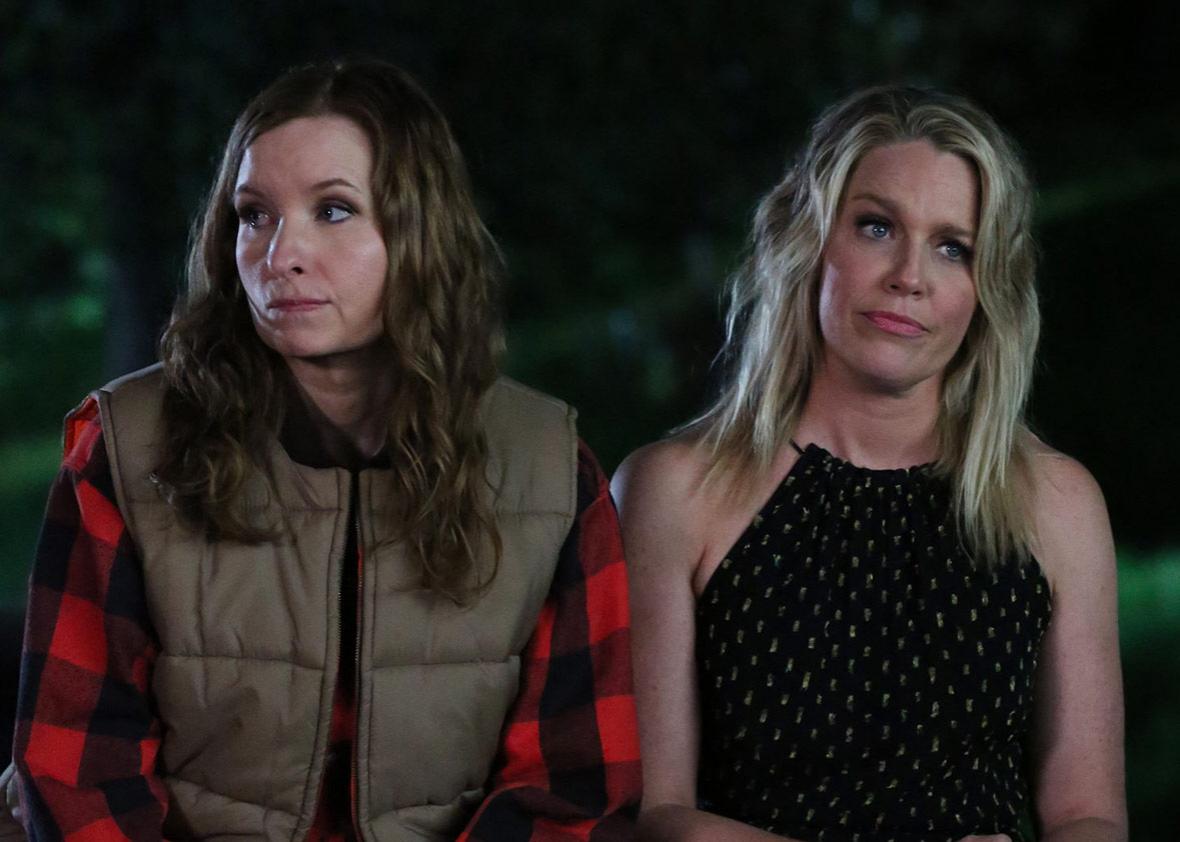Dear Todd, Willa, and June:
Oh, Willa, I could not agree with you more. Stories should end, and the fact that endings are hard and frequently criticized—people are still bitching about the Seinfeld finale, and it was almost 20 years ago—shouldn’t mean you just get to disappear the one you had committed to and give yourself a do-over. (That said, the ninth season of Roseanne actually is extremely terrible and should be erased from all records if not launched into the sun.) If The Leftovers was just Lindelof’s act of atonement for the, uh, let’s say muddled Lost finale, dayenu—and goes to your point, Willa, that most viewers would probably rather see series creators create new things, bringing into them lessons they learned from earlier projects, rather than just trying to Groundhog Day shows that went off the rails until they feel they’ve put them on the right track. I’m not saying that because the screeners for yet another season of The X-Files recently hit my inbox, but I’m not not saying that either.
With that in mind, I want to praise the series finale of Playing House, which aired this summer. Poor Playing House—created by and starring the brilliant Lennon Parham and Jessica St. Clair, about a woman who leaves her husband toward the end of her first pregnancy and the best friend who drops everything to move in and support her—was already ill-served by its network: It premiered in 2015 as part of USA’s short-lived attempt to get into scripted original series (RIP Sirens). After its first hilarious, quirky, intermittently tear-jerking, and eminently accessible season—truly, this is not an especially niche-y or edgy show and could have been a four-quadrant hit if it had been on ABC with a Modern Family lead-in—USA dumped Season 2 in clumps (two back to back with both its premiere and finale). Season 3 came to air with even more handicaps, delayed a year due to St. Clair’s breast cancer treatment, and when the show gave her character, Emma, the same diagnosis and dealt with it in a series of sweet, thoughtful, sensitive, very funny episodes, USA moved the show to 11 p.m. on Fridays and dumped the entire season to on-demand services immediately following the premiere.
Parham and St. Clair’s first TV series together, the equally excellent Best Friends Forever, lasted just six episodes on NBC, which may be why each of Playing House’s three season finales felt designed to serve as farewells if USA chose not to continue. And since, by the time St. Clair and Parham got to Season 3, Playing House was USA’s last original scripted half-hour—keep on keeping on, Chrisley Knows Best, I guess—the episode that ended up being the series finale feels the most final of them all. Emma and Maggie (Parham) have car trouble on the way to a double date, which turns into a classic Playing House caper that culminates with a drag queen makeover—featuring several RuPaul’s Drag Race alumnae—that turns them into twin Tinas Turner so they can lip-sync “Proud Mary” at a drag club. That sounds ridiculous, and is, in the best way, but it’s also absolutely true to the characters we’ve come to know; and while the drag aspect may have been conceived primarily for the set-piece payoff, by this point Emma’s come through her treatment stronger, wiser, and looking forward to the future—absolutely the kind of journey with which drag queens can sympathize. Most importantly, while the double date is the premise for the episode, the guys are totally beside the point, because Playing House’s real love story is that of Maggie and Emma’s friendship. Reader, I sobbed. (I might be crying a little now remembering it, and I haven’t seen it in six months.)
I guess Playing House also qualifies as a beneficiary of peak-TV largesse: For all the ways USA seemed like it was trying to sabotage its success, it probably wouldn’t have stuck with it as long as it did if the option to stream it in various forms weren’t available; furthermore, 10 years ago—five, even—it was rarer for women to get stories about women on TV, and now four of my top 10 shows for the year are by women; seven are about women (some almost exclusively). Morons have been wringing their hands the past couple of months wondering where our art is supposed to come from if bad, (supposedly) great men are bounced out of the industry. We’ve still got women—we’ll be fine. (We’ll be better off.)
xoxo,
Tara
